CMN 447
Communication and Law

1. Course Description
Communication practitioners must understand how law matters in every day communication and be cognizant of the principles, institutions, and practices that regulate communication in a range of media and contexts. In this case and theory-based course, students explore the intersections of communication and law through the study of semiotics and legal discourse; the social and technological contexts of communication that provoke and challenge legal regulation; freedom of expression; and the legal frameworks for the protection of consumers, individual privacy, and intellectual property in the digital age.
Last Revised
Prerequisites
CMN 100 or CMN 114 or CMN 124 or CMN 200 or CMN 201 or CMN 207 or CMN 279 or CMN 300 or CMN 373
Delivery
Lab: 3 hours
2. Course Objectives & Learning Outcomes
- To critically evaluate the intersections of law and communication in democratic societies
- To apply communication theory to communicating law
- To describe and analyze the legal regulation of communication
3. Topics Covered
- Introduction to communication law in Canada
- Legal discourse and semiotics, including plain language legal writing
- Justifications for and restrictions on freedom of expression, including libel
- Privacy and the protection of personal data
- Intellectual property
- Issues in e-Commerce, including authentication, consumer protection and online fraud
- Truth in advertising and public relations
- Law and social media
4. Teaching Method
Teaching methods
Teaching will be conducted by lecture, discussion and workshops. Students will be expected to contribute to the in-class dialogue.
Graded Assignments
Evaluation will be based on a combination of take-home and in-class assignments and class participation. Students will prepare a minimum of four written assignments, including a major report, and deliver a collaborative oral presentation. The weighting of each assignment will be announced by the instructor.
5. Course Materials
Textbooks
- Communication and Law Custom Reader, Ryerson University, 2014 (available at the Ryerson University Bookstore).
- Kratz, Martin P.J. (2013). Canada’s Internet Law in a Nutshell. Toronto: Carswell (available at the Ryerson Bookstore). ISBN: 978-0-7798-5481-3
Additional Reference
Additional readings in D2L Brightspace-Area e-Reserve (See the Course Readings tab in the left menu in your CMN 447 D2L Brightspace course).
6. Policy
6.1 University Policies
Students are required to adhere to all applicable university policies found in their Online course shell in D2L and the Course Outline Policies.
6.2 Print and Digital Copying Guidelines:
Toronto Metropolitan University complies with Canada’s Copyright Act which protects both creators/owners and users of copyrighted materials. Students should familiarize themselves with TMU Copyright policies and procedures, and contact the Copyright and Scholarly Engagement Librarian at copyrt@torontomu.ca for questions, concerns and clarification of the copyright rules.
6.3 Turnitin.com
Turnitin.com is a plagiarism prevention and detection service to which Toronto Metropolitan University subscribes. It is a tool that helps instructors determine the similarity between student work and the work of other students who have submitted papers to the site (at any university), Internet sources, and a wide range of books, journals, and other publications. While it does not contain all possible sources, it gives instructors some assurance that students’ work is their own. No decisions are made by the service; it generates an “originality report,” which instructors must evaluate to judge whether something is plagiarized.
Students agree by taking this course that their written work will be subject to submission for textual similarity review to Turnitin.com. All submitted papers will be included as source documents in the Turnitin.com reference database solely for the purpose of comparing the similarity of such papers. Use of the Turnitin.com service is subject to the terms-of-use agreement posted on the Turnitin.com website. Students who do not want their work submitted to this plagiarism detection service must, by the end of the second week of class, consult with their instructor to make alternative arrangements. Even when an instructor has not indicated that a plagiarism detection service will be used, or when a student has opted out of the plagiarism detection service, if the instructor has reason to suspect that an individual piece of work has been plagiarized, the instructor is permitted to submit that work in a non-identifying way to any plagiarism detection service.
6.4 Email Communication
Toronto Metropolitan University requires that any official or formal email communication from students be sent from their official Toronto Metropolitan University electronic accounts.
6.5 Video and Audio Recording
No video or audio recording is permitted in class without the express permission of the instructor.
7. Learning Management System
Toronto Metropolitan University supports Brightspace by D2L as its official Learning Management System. University Policies governing Brightspace have been documented at the Courses @ Toronto Metropolitan University Privacy and Security website.

